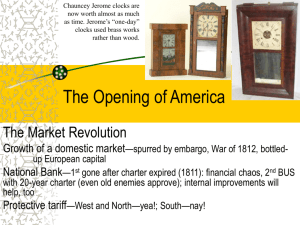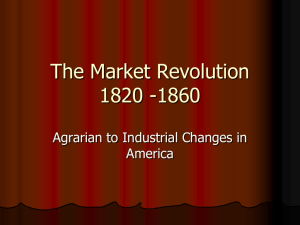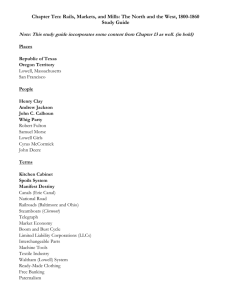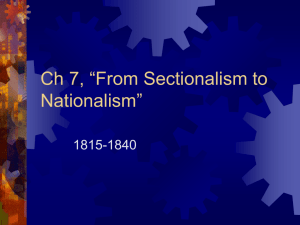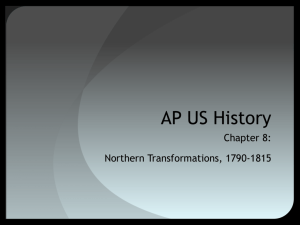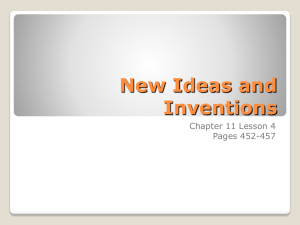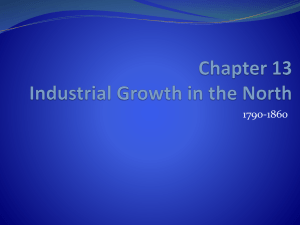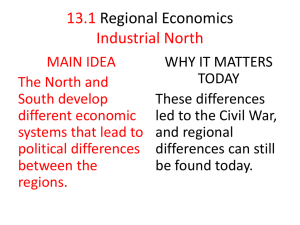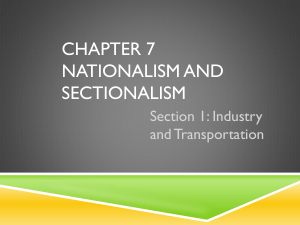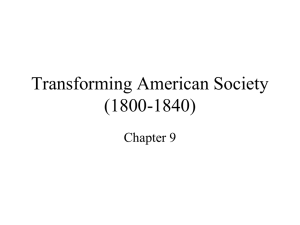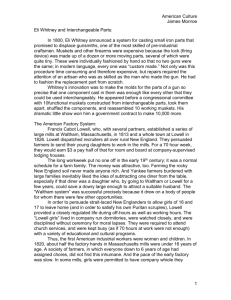Chapter 3, Section 1- Industry and Transportation The
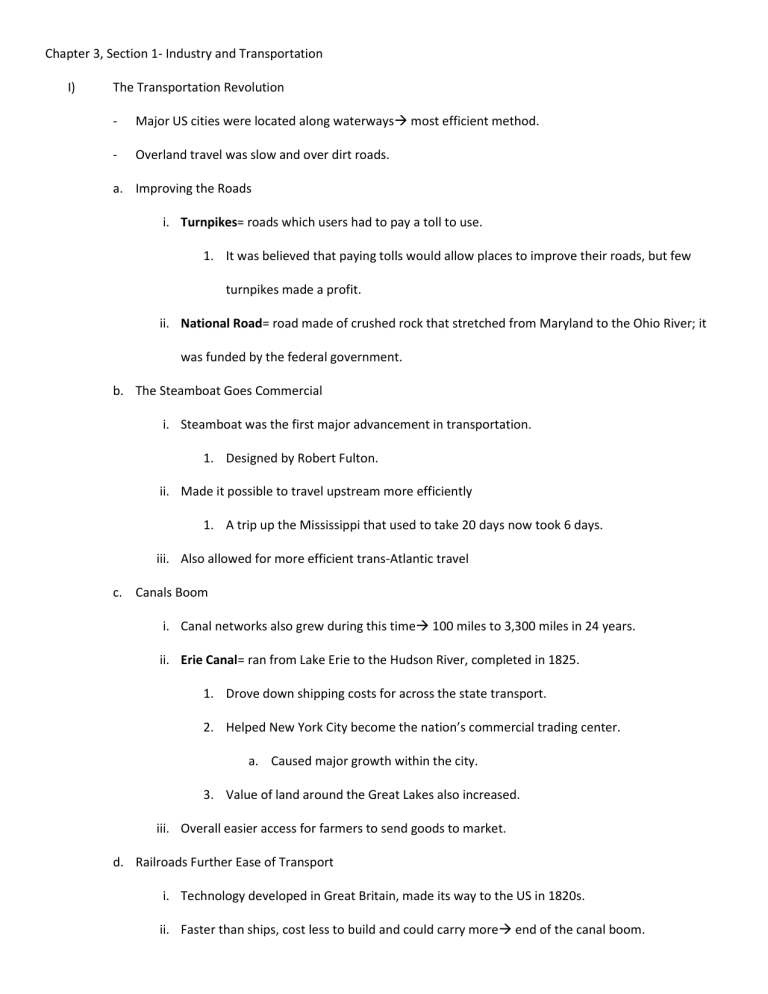
Chapter 3, Section 1- Industry and Transportation
I) The Transportation Revolution
Major US cities were located along waterways most efficient method.
Overland travel was slow and over dirt roads. a.
Improving the Roads i.
Turnpikes= roads which users had to pay a toll to use.
1.
It was believed that paying tolls would allow places to improve their roads, but few turnpikes made a profit. ii.
National Road= road made of crushed rock that stretched from Maryland to the Ohio River; it was funded by the federal government. b.
The Steamboat Goes Commercial i.
Steamboat was the first major advancement in transportation.
1.
Designed by Robert Fulton. ii.
Made it possible to travel upstream more efficiently
1.
A trip up the Mississippi that used to take 20 days now took 6 days. iii.
Also allowed for more efficient trans-Atlantic travel c.
Canals Boom i.
Canal networks also grew during this time 100 miles to 3,300 miles in 24 years. ii.
Erie Canal= ran from Lake Erie to the Hudson River, completed in 1825.
1.
Drove down shipping costs for across the state transport.
2.
Helped New York City become the nation’s commercial trading center. a.
Caused major growth within the city.
3.
Value of land around the Great Lakes also increased. iii.
Overall easier access for farmers to send goods to market. d.
Railroads Further Ease of Transport i.
Technology developed in Great Britain, made its way to the US in 1820s. ii.
Faster than ships, cost less to build and could carry more end of the canal boom.
II)
III)
Technology Sparks Industrial Growth
Technological developments led to growth in manufacturing became known as the Industrial
Revolution. a.
Slater Opens First Textile Mill i.
Britain got jealous of our technology boom, so they banned all machinery exports and emigration of those who had that type of knowledge. ii.
Samuel Slater moved to the United States and developed the first water-powered textile mill in
Rhode Island.
1.
Production of cotton thread. iii.
Gave way to the family system of employment
1.
Families live and work around the mills. b.
Lowell Builds Fully Operational Mill i.
Francis Cabot Lowell toured England’s factories secretly to gather information.
1.
Built a mill in Massachusetts where the complete production of cloth occurred, not just the thread as in Slater’s. ii.
Employed young women from the surrounding farmers (known as Lowell girls) and housed them in boardinghouses where they could be supervised. c.
Factory Work Changes Lives i.
Improvements in speed and volume of production. ii.
Machines did a lot of the work
1.
Lessened the need for trained and skilled employees. a.
More available workers who cost less to employ.
Inventions Transform Industry and Agriculture a.
New Methods of Production i.
Interchangeable parts= identical machine components that could be used in place of one another.
1.
Introduced by Eli Whitney to the US.
2.
Made it possible to produce more efficiently as well as a wide range of manufactured goods. b.
Innovation Quickens Communication i.
Samuel F.B. Morse invented the telegraph. ii.
Code of dots and dashes became known as Morse code.
1.
Allowed for almost instantaneous message delivery. c.
Agriculture Remains Strong i.
Still remained the largest industry in the United States, even with the manufacturing boom. ii.
Farms became more productive and able to raise larger crops for market. iii.
Development of new methods of farming.
1.
Steel plow invented in 1840 by Cyrus McCormick.
